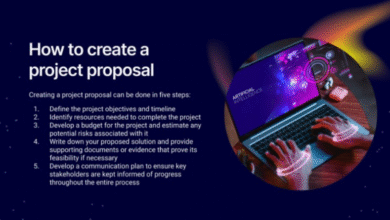Key Budget Considerations for Company Planning

Laying the Groundwork for Strategic Budgeting
Effective budgeting is a cornerstone of successful company planning, regardless of size or industry. A well-crafted budget functions not only as a financial roadmap but also as a strategic tool for decision-making, resource allocation, and risk management. Organizations that consistently plan and manage their budgets with intention are better positioned to respond to changing market conditions, capitalize on growth opportunities, and maintain operational resilience. Crafting a comprehensive budget involves much more than estimating revenues and expenses—it requires a deep understanding of organizational goals, stakeholder priorities, and both short- and long-term needs.
A budget should reflect the full spectrum of business activities, including operating costs, capital expenditures, staffing, marketing, technology, compliance, and contingency reserves. It must also align with broader strategic objectives and be structured to support flexible forecasting and scenario planning. By anticipating shifts in revenue streams, customer demand, or regulatory changes, leaders can ensure the company remains agile and well-prepared for both planned investments and unexpected challenges.
Operational Costs and Fixed Expenditures
The first area to address in any business budget is ongoing operational expenses. These include the fixed and variable costs that keep the business running day-to-day. Rent or mortgage payments, utilities, insurance, and maintenance fees are typically among the largest fixed costs. Other recurring operational expenses may include software subscriptions, third-party services, and office supplies. It’s important to regularly evaluate vendor contracts and service agreements to ensure the organization is receiving competitive rates and value.
Salaries, benefits, and payroll taxes are also major components of the operating budget. Staffing needs must be carefully aligned with growth forecasts, project pipelines, and anticipated turnover. Budgeting for professional development and employee retention initiatives—such as training programs or performance incentives—can also contribute to a more skilled, engaged workforce and reduce long-term hiring costs.
Capital Investments and Infrastructure
While operational costs keep the business functioning, capital investments are what drive innovation and growth. These may include upgrades to physical infrastructure, new equipment, or the acquisition of property. In a digital-first environment, capital expenses often extend to IT infrastructure—servers, cybersecurity systems, or enterprise-level software platforms.
When planning for infrastructure upgrades, it’s essential to consider both current needs and future scalability. For example, investing in the best smart boards for conference rooms or training environments may enhance productivity and collaboration, but the value will depend on compatibility with existing systems and the ability to adapt to evolving digital workflows. These types of purchases should be evaluated not only on upfront cost but on long-term ROI, maintenance, and training requirements.
Marketing, Growth, and Innovation
To remain competitive and visible in the marketplace, companies must allocate meaningful resources to marketing and business development. This includes digital advertising, brand development, content creation, event sponsorships, and sales enablement tools. Marketing budgets should reflect performance metrics and be adaptable based on market trends and campaign results.
Innovation initiatives, including research and development, product design, and strategic partnerships, also warrant dedicated funding. These investments are often longer-term and may not show immediate returns, but they are essential for driving differentiation and expanding market share. Budgeting for innovation involves balancing risk with opportunity, ensuring there are sufficient funds for experimentation without compromising core operations.
Contingency Planning and Risk Mitigation
No budget is complete without provisions for the unexpected. Contingency funds should be built into each major category, allowing for flexibility in the face of unanticipated costs—such as economic downturns, supply chain disruptions, or sudden infrastructure failures. The recommended reserve varies by industry and business model, but even a modest buffer can prevent cash flow crises and reduce the need for reactive decision-making.
Risk mitigation strategies may also include business interruption insurance, financial stress testing, and diversification of revenue sources. Budgeting for these safeguards reflects a proactive approach to sustainability and business continuity.
Final Thoughts
Strategic budgeting is not a static annual exercise—it is a dynamic process that should evolve alongside business goals, market conditions, and operational realities. By accounting for core operations, capital investments, technology, growth initiatives, and contingency planning, leaders can develop budgets that not only manage risk but also create space for innovation and long-term success. When done well, budgeting becomes an essential driver of organizational clarity, accountability, and strategic alignment.



